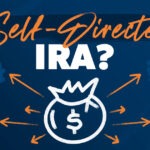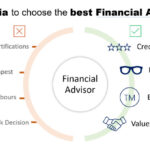When it comes to securing your financial future, one of the best tools available for self-employed individuals or business owners is the Solo 401k. This retirement account, also known as an individual 401k, offers significant tax advantages and allows you to save a substantial amount of money for retirement. However, maximizing the potential of your Solo 401k requires more than just contributing the minimum each year. In this post, we will explore smart investment strategies that can help you grow your Solo 401k and ensure a comfortable retirement.
Understanding the Solo 401k
Before diving into investment strategies, it’s important to understand the structure of a Solo 401k. Designed for self-employed individuals and small business owners with no employees (except for a spouse), the Solo 401k allows for both employee and employer contributions, which can significantly increase the amount you can save annually.
The Solo 401k has two main types of contributions:
- Employee Contributions: In 2025, you can contribute up to $22,500 (or $30,000 if you are 50 or older) to your Solo 401k as an employee.
- Employer Contributions: As the business owner, you can contribute up to 25% of your compensation to the plan. The total combined contribution (employee and employer) can reach $66,000 (or $73,500 if you’re 50 or older).
These contribution limits make the Solo 401k a powerful vehicle for growing your retirement savings. However, to fully maximize this account’s potential, you need to carefully plan your investment strategy.
Smart Investment Strategies for Your Solo 401k
Diversification: The Foundation of a Solid Investment Strategy
The first principle of any strong investment strategy is diversification. By spreading your investments across different asset classes, such as stocks, bonds, real estate, and even alternative investments, you reduce your risk and increase the potential for returns over the long term.
A well-diversified portfolio can help buffer against market volatility. For example, if the stock market experiences a downturn, your bond investments may hold steady, or even appreciate, helping to offset the losses in your equities.
1. Stocks and Equities:
Investing in stocks is one of the most common ways to grow wealth over time. The stock market has historically outperformed other asset classes in terms of long-term growth. Within your Solo 401k, you can invest in a variety of stocks, including:
- Large-Cap Stocks: Companies with a market capitalization over $10 billion, which tend to be more stable and less volatile.
- Small-Cap Stocks: Companies with a market cap between $300 million and $2 billion, which may offer higher growth potential but come with increased risk.
- International Stocks: Expanding your investment to include international equities can provide greater diversification and reduce your exposure to the U.S. market alone.
2. Bonds and Fixed-Income Securities:
Bonds can be an essential part of your portfolio, especially if you are seeking to balance the volatility of stocks with more predictable returns. Bonds are a type of debt investment where you lend money to an organization, and in return, the entity agrees to pay you periodic interest and return your principal at maturity.
- Treasury Bonds: These are issued by the U.S. government and considered very safe.
- Corporate Bonds: Issued by companies, these carry more risk than Treasury bonds but often offer higher yields.
- Municipal Bonds: Issued by state or local governments, municipal bonds can offer tax advantages, especially for individuals in higher tax brackets.
3. Real Estate Investments:
Real estate can be an excellent long-term investment for your Solo 401k. Many Solo 401k plans allow for investments in real estate, either directly or through Real Estate Investment Trusts (REITs). While direct real estate investments may require significant capital upfront, they can offer high potential returns through appreciation and rental income.
REITs allow you to invest in real estate without the need to manage properties directly. They are also liquid investments, unlike direct real estate investments, which can take time to sell.
4. Alternative Investments:
Alternative investments can provide additional diversification, especially during periods of economic uncertainty. These can include investments in commodities, private equity, hedge funds, or even cryptocurrencies.
However, alternative investments tend to carry more risk, and not all Solo 401k plans allow for them. Before considering these types of investments, check with your plan administrator to ensure they are permissible.
Maximize Contributions and Take Advantage of Tax Deferrals
One of the main benefits of the Solo 401k is the ability to make large contributions while benefiting from tax deferral. The IRS allows you to defer paying taxes on the contributions you make, which means you don’t pay taxes on the money until you withdraw it in retirement.
Maximizing your contributions each year can significantly increase the amount you can save for retirement. You should aim to contribute the maximum allowed by law, especially if you are under the age of 50. The more you contribute, the more your investments can grow tax-deferred, resulting in a larger retirement nest egg.
Roth Solo 401k: Tax-Free Growth
A Roth Solo 401k is a variation of the traditional Solo 401k. Unlike a traditional Solo 401k, where you receive tax deductions on your contributions, contributions to a Roth Solo 401k are made with after-tax dollars. The benefit, however, is that your earnings grow tax-free, and qualified withdrawals are also tax-free.
If you believe your income will be higher in retirement, or if you anticipate being in a higher tax bracket in the future, a Roth Solo 401k can be a great way to maximize your savings.
The Roth Solo 401k also allows for larger contributions than an individual retirement account (IRA), and you can still make both employee and employer contributions, up to the limit set for Solo 401ks.
Rebalancing Your Portfolio Regularly
Over time, the performance of your investments will cause the allocation of your portfolio to drift from your intended strategy. For example, if your stocks perform exceptionally well, they may make up a larger portion of your portfolio than you originally intended. This can increase your risk exposure, especially during market downturns.
Rebalancing your portfolio ensures that your asset allocation remains in line with your financial goals and risk tolerance. Typically, you should review your portfolio at least once a year and make adjustments as needed to maintain the desired balance between stocks, bonds, and other investments.
Plan for the Long-Term: Avoiding Emotional Decision-Making
When investing in a Solo 401k, it’s essential to think long-term and avoid making emotional decisions based on short-term market fluctuations. While it can be tempting to make changes to your investments during periods of volatility, staying focused on your long-term goals will serve you better in the long run.
Market downturns can provide opportunities to buy stocks at a discount, so don’t panic during a market dip. Conversely, during bull markets, it can be easy to get caught up in the excitement, but it’s crucial to remain disciplined and stick to your investment strategy.
The Role of a Financial Advisor
While it’s possible to manage your Solo 401k investments on your own, it can also be beneficial to work with a financial advisor. A financial advisor can help you develop a personalized investment strategy based on your retirement goals, risk tolerance, and time horizon.
A professional can also help you navigate complex tax laws and optimize your investment strategy for tax efficiency, ensuring that you take full advantage of the Solo 401k’s benefits.
Conclusion: Maximize Your Solo 401k Potential
A Solo 401k is one of the most powerful retirement tools available to self-employed individuals. By diversifying your investments, maximizing contributions, and taking advantage of tax deferral and Roth options, you can significantly grow your retirement savings. Regularly rebalancing your portfolio and sticking to a long-term strategy will ensure that you’re on track to meet your retirement goals. Whether you choose to manage your Solo 401k on your own or work with a financial advisor, taking an active role in your retirement planning is crucial for financial success in the future.
In the end, the more strategic and proactive you are with your Solo 401k investments, the better positioned you’ll be for a financially secure retirement. Make the most of your Solo 401k today by implementing smart investment strategies and setting yourself up for success tomorrow.









